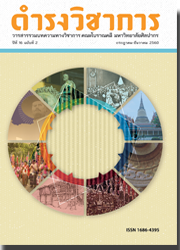Equestrian Monument of Cosimo I by Giambologna: Originality, Projection of Power and Artistic Details
Keywords:
Giambologna, Sculpture, Equestrian, Cosimo I, FlorenceAbstract
This article aims to study the bronze equestrian monument of Cosimo I by the Flemish sculptor Giambologna, made between 1587 and 1594, which still stands in Piazza Della Signoria, Florence, Italy. In addition to considering some interesting angles that may have been overlooked, the author analyzed this artwork within the conventional context of an official portrait. Three issues are explored here. The first one concerns the sculpture's originality for this is a direct image of a sovereign at the end of the 16th century, while other sculptures during this time period represented the subject in a symbolic way. Furthermore, this is a striking example of earlier models of equestrian monuments cast in the Roman period and during the Renaissance. The second issue emphasizes the power, projecting from the monument through the attitudes of Cosimo and the horse, its stability and harmony, and the story of Cosimo's glorious moments narrated in bas-reliefs on the base. The last point deals with some remarkable artistic details in the human figure, especially Cosimo's features and armor that are comparable to other artworks, and the animal's realistic anatomy.
References
Arasse D. & Tönnesmaan A., 1997. La Renaissance maniériste. Paris: Gallimard.
Avery C., 1996. Florentine Renaissance Sculpture. London: John Murray.
Avery C. & Hall M., 1999. Giambologna (1529-1608). Comment s’attacher l’âme d’un prince. Paris: Somogy.
Boucher B., 1999. La Sculpture baroque italienne. Paris: Thames & Hudson.
Cox-Rearick J., 2005. “Friendly Rivals: Bronzino and Salviati at the Medici Court, 1543-48.” Master Drawings 43 (3): 292-315.
Elet Y., 2002. “Seats of Power: The Outdoor Benches of Early Modern Florence.” Journal of the Society of Architectural Historians 61 (4): 444-469.
Forster K., 1971. “Metaphors of Rule. Political Ideology and History in the Portraits of Cosimo I de’ Medici.” Mitteilungen Des Kunsthistorischen Institutes in Florenz 15 (1): 65-104.
Fugelso K., 2008. “Mural Morality: Manipulating Walls to Define Politics in ‘Commedia’Miniatures.” Dante Studies, with the Annual Report of the Dante Society (126): 109-141.
Grömling A., 2000. Michel-Ange. Sa vie et son œuvre. Hong Kong: Könemann.
Joost-Gaugier C., 1987. “Lorenzo the Magnificent and the Giraffe as a Symbol of Power.” Artibus Et Historiae 8 (16): 91-99.
Martin M., 1986. Les monuments équestres de Louis XIV. Une grande entreprise de propagande monarchique. Paris: Picard.
Meiss M., 1973. “A New Monumental Painting by Filippino Lippi.” The Art Bulletin 55 (4): 479-493.
Olson R. J. M., 2001. Italian Renaissance Sculpture. London: Thames & Hudson.
Pope-Hennessy J., 1996. Italian High Renaissance and Baroque sculpture. London: Phaidon Press.
Setton K. M., 1984. The Papacy and the Levant, 1204-1571. Volume IV. The Sixteenth Century. Philadelphia: American Philosophical Society.
Simon R., 1983. “Bronzino’s Portrait of Cosimo I in Armour.” The Burlington Magazine 125 (966): 527-539.
Victoria and Albert Museum, 2017. A Pacing horse. London. Retrieved January 20, 2017, from http://collections.vam.ac.uk/item/O93539/a-pacing-horse-statuette-giambologna/
Welton J., 2013. “Italian Mannerism.” in Art That Changed the World (pp. 132-141). New York: DK.
Downloads
Published
Issue
Section
License
บทความนี้เป็นผลงานของข้าพเจ้าแต่เพียงผู้เดียว และ/หรือเป็นผลงานของข้าพเจ้าและผู้ร่วมงาน ตามชื่อที่ระบุในบทความจริง และเป็นผลงานที่มิได้ถูกนำเสนอหรือตีพิมพ์ที่ใดมาก่อน




